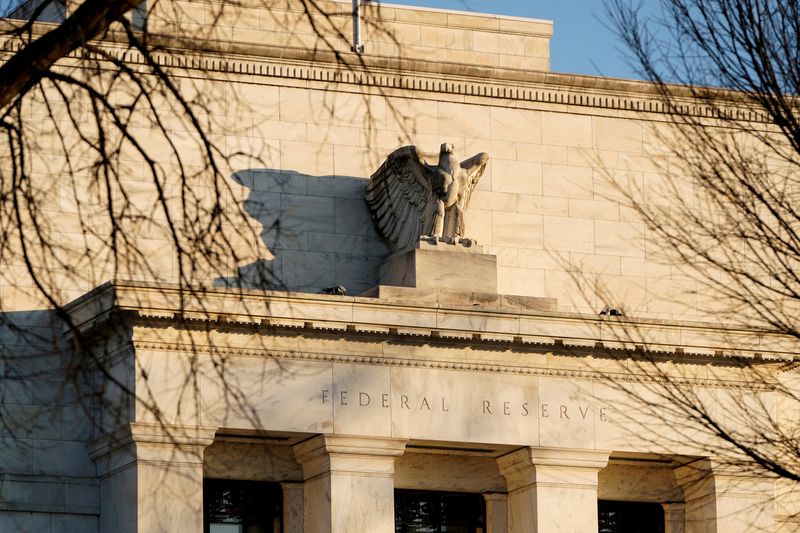By Sarupya Ganguly
BENGALURU - U.S. Treasury yield forecasts from bond strategists have marched higher for a second month amid expectations of limited remaining Federal Reserve rate reductions and rising inflation risks in 2025, a Reuters survey found.
Having kicked off its easing cycle with a jumbo half-percentage point cut in September, the central bank has lowered its fed funds rate by 75 basis points and looks set to trim another 25 bps on Wednesday to 4.25%-4.50%.
Yet, since the first reduction, the benchmark U.S. 10-year Treasury yield, which moves inversely to prices, has shot up around 70 basis points - hitting a near six-month high of 4.50% last month.
The resilience of the world's largest economy and President-elect Donald Trump's proposed policies from tariffs to tax cuts - all expected to be inflationary - have put a dampener on the Fed's easing plans and pushed yields higher, particularly on longer-dated bonds.
While the benchmark 10-year yield has moderated to around 4.40%, the median forecast from a Dec. 12-17 Reuters poll was for it to fall modestly to 4.25% in a year - above the 4.10% recorded last month and 50 bps higher than an October median.
Around 55% of forecasters raised their twelve-month 10-year note yield forecasts from November.
"If Trump's policies focus on pushing growth up via increasing deficits, rates have even more room to move up," said Zhiwei Ren, portfolio manager at Penn Mutual Asset Management.
"Over the coming two years, it's very hard to see those deficits coming down materially - which means the government will have to sell a lot of Treasuries to finance spending."
An Oct. 28 estimate from the Committee for a Responsible Federal Budget, a budget-focused think-tank, found Trump's proposed policies could push up U.S. fiscal debt by $7.75 trillion over the next decade.
"Inflation was coming down sharply during the summer, but now that has stopped. The labor market has weakened a bit, but is still strong. Consumer spending is resilient and equities are hitting record highs. Financial conditions may not be as tight as the Fed thinks," Ren added.
"If the Fed keeps cutting in this raging bull market, long-end rates will move even higher."
In line with interest rate futures, economists surveyed by Reuters last week now expect only three more quarter-point rate cuts next year - half the amount predicted earlier this year.
Yet, forecasters remained mostly conservative in their point estimates for higher yields.
Survey medians from 44 strategists showed the benchmark yield slightly below current levels at 4.30% in three months and 4.27% at end-May, but both higher than November.
"Market rates are likely to remain around current levels," said Robert Tipp, chief investment strategist at PGIM Fixed Income. "While the Fed is likely to continue to cut, it definitely won't be the one-cut-per-meeting pace priced in at some points over the last several quarters."

A 75%-strong majority, 15 of 20 strategists, responding to an additional question said the 10-year yield was unlikely to cross 5% next year. The last time it did so was in October 2023.
"One of the scenarios we considered is a 'higher for longer' yield curve, where the 10-year yield could return to 5%. In that case, extending duration, i.e. buying longer-dated bonds, could be detrimental. But it's not our base case," said Hong Cheng, head of fixed income and currency research at Morningstar.